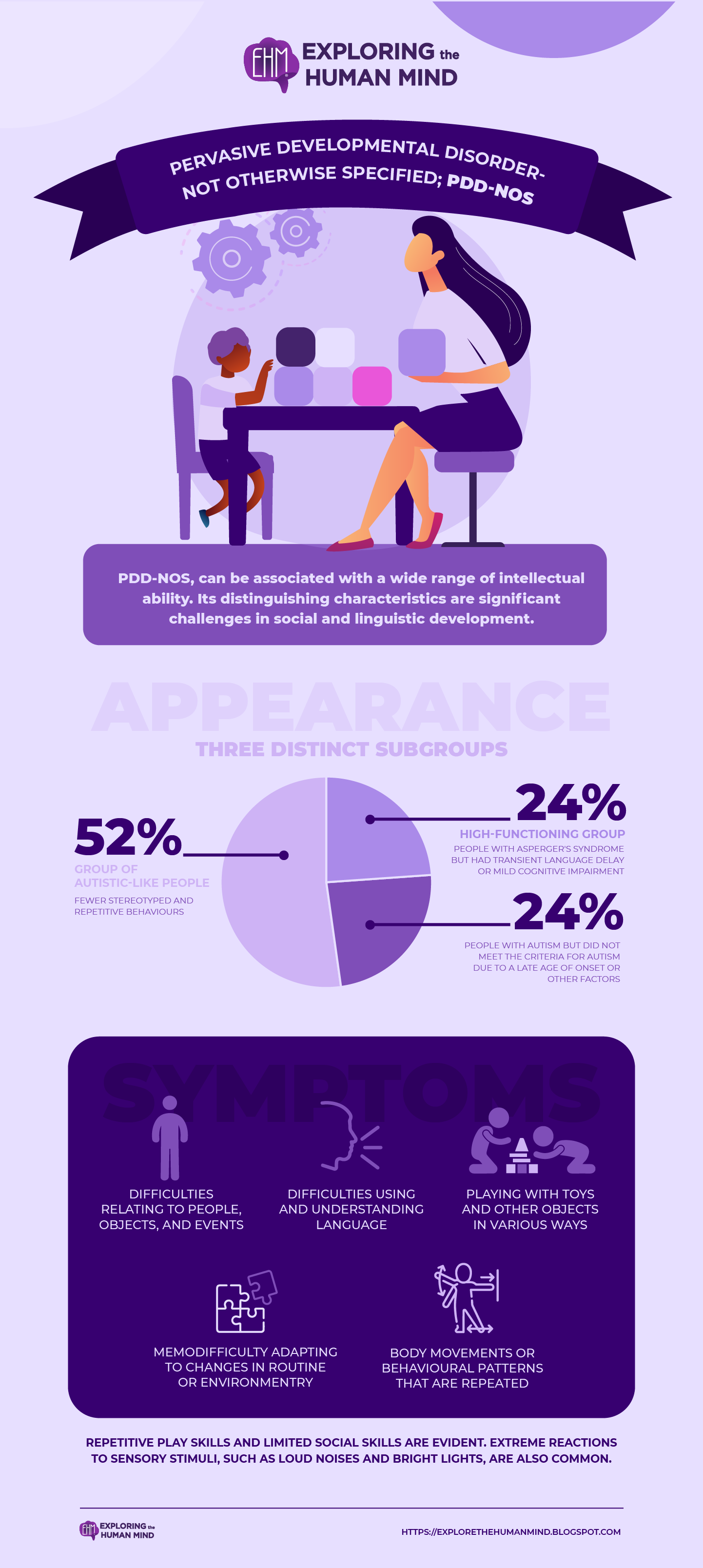Pervasive developmental disorder PDD-NOS
PDD-NOS, like all forms of autism, can be associated with a wide range of intellectual ability. Its distinguishing characteristics are significant challenges in social and linguistic development.
Appearance
What might the appearance of a person with PDD-NOS be like? Of course, this will vary, but in one study, researchers discovered that those with PDD-NOS could be classified into one of three distinct subgroups:
- A high-functioning group (24%) who resembled people with Asperger's syndrome but had transient language delay or mild cognitive impairment (and thus could not be diagnosed with Asperger's, which requires no speech or cognitive delay).
- A group (24%) who resembled people with autism but did not meet the criteria for autism due to a late age of onset or other factors.
- A group of autistic-like people (52%), but with fewer stereotyped and repetitive behaviours.
More research is needed to determine whether specific autism spectrum conditions, as yet unnamed, can be separated from the catch-all category known as PDD-NOS. There is no doubt that such conditions exist, that PDD-NOS (or whatever conditions we are lumping in that category for the time being) exists.
Symptoms
Symptoms might include the following:
Children with PDD vary widely. Some children do not speak at all, while others speak in short phrases or conversations, and still others have average language development. In general, repetitive play skills and limited social skills are evident. Extreme reactions to sensory stimuli, such as loud noises and bright lights, are also common.

vectors by Freepick; graphic design by Vadot
Reference:
Children with PDD vary widely. Some children do not speak at all, while others speak in short phrases or conversations, and still others have average language development. In general, repetitive play skills and limited social skills are evident. Extreme reactions to sensory stimuli, such as loud noises and bright lights, are also common.
PDD-NOS. (2023). Kennedykrieger.org; Kennedy Krieger Institute. https://www.kennedykrieger.org/stories/interactive-autism-network-ian/pddnos#:~:text=PDD%2DNOS%20may%20be%20thought,in%20another%20key%20area%20(like Pervasive Developmental Disorders. (2023). National Institute of Neurological Disorders and Stroke. https://www.ninds.nih.gov/health-information/disorders/pervasive-developmental-disorders






Comments
Post a Comment